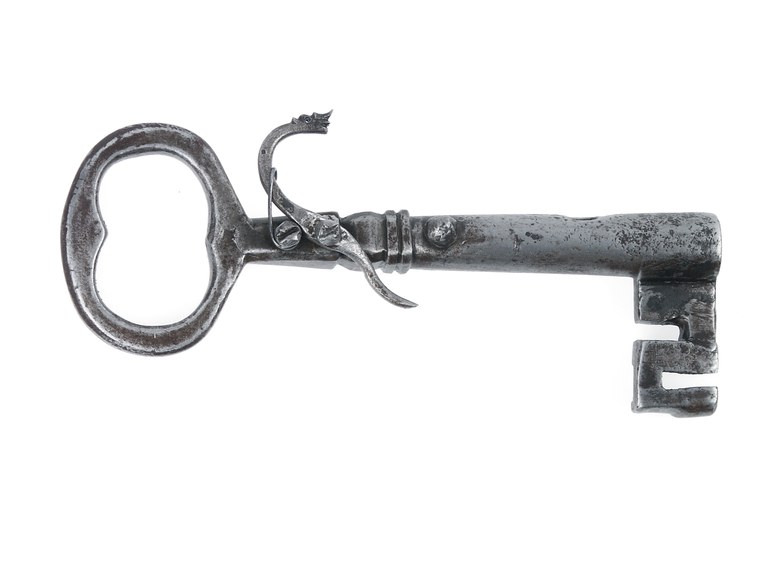16th century key-gun

It can be considered a rare piece, given the scarce nature of this kind of weapons.
Some of them are extremely rudimentary, with no firing mechanism. The small hole we see on the top of the “barrel” is, in fact, nothing but the mark indicating that the arm had been rendered useless. This weapon functioned thanks to a matchlock system, in use from approximately 1450. The fuse was connected to the serpentine (an S-shaped arm). A little later, around 1470, this mechanism was improved, fixing the serpentine to a moving hook which transferred the lighted fuse to the flash pan by means of a lever. This was the predecessor of the trigger. Although this feature substantially improved the arm, it is easy to imagine that it must have been rather difficult to light the fuse while holding the weapon and aiming, and even more so in the wind or rain. This system remained in place until the 17th century.
In the case at hand, we can say that, as far as the key-guns we have seen are concerned, this is a rather sophisticated model, fitted with a matchlock, also finely decorated.
While there is no doubt as to its unusual nature, what is questionable is just how practical it was, given that the projectile would have been a tiny bullet, with a very short range. Also, once the warden had started to turn the key, it would have been frankly complicated to activate the matchlock. This very probably explains why it enjoyed such poor popularity.
This piece, which undoubtedly deserves a special place in the current permanent exhibition, comes from the Armoury School arms collection, although its exact date of arrival is unknown.

